Related Research Articles

Sir Julius Caesar was an English lawyer, judge and politician who sat in the House of Commons at various times between 1589 and 1622. He was also known as Julius Adelmare.

William Parker, 13th Baron Morley, 4th Baron Monteagle, was an English peer, best known for his role in the discovery of the Gunpowder Plot. In 1605 Parker was due to attend the opening of Parliament. He was a member of the House of Lords as Lord Monteagle, the title on his mother's side. He received a letter; it appears that someone, presumably a fellow Catholic, was afraid he would be blown up. The so-called Monteagle letter survives in the National Archives, but its origin remains mysterious.
The Groom Porter was an office at the royal court of the monarch of Britain, who had "the Inspection of the King's Lodgings, and takes care that they are provided with Tables, Chairs, Firing, &c. As also to provide Cards, Dice, &c. when there is playing at Court: To decide Disputes which arise in Gaming". He was also responsible for "oversight of common Billiards Tables, common Bowling Grounds, Dicing Houses, Gaming Houses and Common tennis Courts and power of Licensing the same within the Citys of London and Westminster or Borough of Southwark."
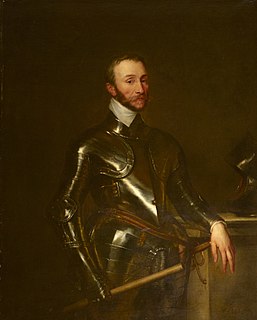
Henry Percy, 8th Earl of Northumberland, 2nd Baron Percy was an English nobleman and conspirator.

Sir William StanleyKG was an English soldier and the younger brother of Thomas Stanley, 1st Earl of Derby. Stanley fought with his troops in several battles of the Wars of the Roses.
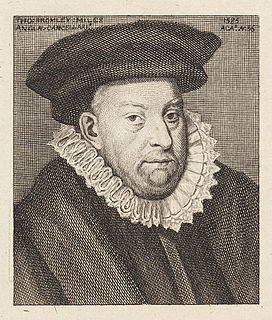
Sir Thomas Bromley was a 16th-century lawyer, judge and politician who established himself in the mid-Tudor period and rose to prominence during the reign of Elizabeth I. He was successively Solicitor General and Lord Chancellor of England. He presided over the trial of Mary, Queen of Scots and died three months after her execution.
Knollys, Knolles or Knowles, the name of an English family descended from Sir Thomas Knollys, Lord Mayor of London, possibly a kinsman of the celebrated general Sir Robert Knolles. The next distinguished member of the family was Sir Francis Knollys or Knowles, English statesman, son of Sir Robert Knollys, or Knolles, a courtier in the service and favour of Henry VII and Henry VIII. Robert had also a younger son, Sir Henry, who took part in public life during the reign of Elizabeth I and who died in 1583. From the time of Sir Francis, the family were associated with Greys Court at Rotherfield Greys and Caversham Park, then in Oxfordshire, as well as the nearby town of Reading in Berkshire, where the family's private chapel could once be seen in the church of St Laurence. Lettice Knollys was pronounced the most prominent member of the family, from her birth in 1543 until her death in 1634
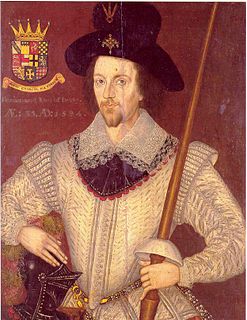
Ferdinando Stanley, 5th Earl of Derby, was an English nobleman and politician. He was the son of Henry Stanley, 4th Earl of Derby, and Lady Margaret Clifford. Ferdinando had a place in the line of succession to Elizabeth I according to the will of Henry VIII, after his mother, whom he predeceased. His sudden death led to suspicions of poisoning amid fears of Catholic plots to overthrow Elizabeth.
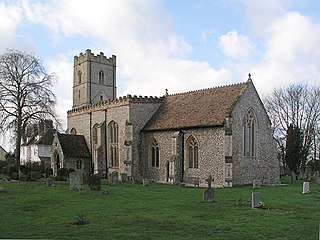
Horseheath is a village in Cambridgeshire, England, situated a few miles south-east of Cambridge, between Linton and Haverhill, on the A1307 road. It was known to the Romans, and it had for a while a fine house in a great park, but both are now gone. The population of the village is included in the civil parish of Bartlow.

Sir Robert Throckmorton, KG, of Coughton Court in Warwickshire, was a Member of Parliament and a distinguished English courtier. His public career was impeded by remaining a Roman Catholic.
Fortescue is a British surname that originated from the Old Norman epithet Fort-Escu. People with the name include:
Nicholas Fortescue may refer to:
Sir Nicholas Fortescue the younger (1605–1644), was an English Knight of St. John.
Nicholas Barham was an English lawyer and Member of Parliament.
Sir Patrick Barnewall or Barnwall, was the eldest son of Sir Christopher Barnewall of Turvey, Grace Dieu Abbey, and Fieldston. Christopher in turn was the son of the elder Sir Patrick Barnewall, who in 1534 was made Serjeant-at-law (Ireland) and Solicitor-General for Ireland, and in 1550 became Master of the Rolls in Ireland. Patrick's mother was Marion Sherle, daughter of Richard Sherle of Shallon, County Meath: after his father's death, she remarried the prominent judge Sir Lucas Dillon. She died in 1607.
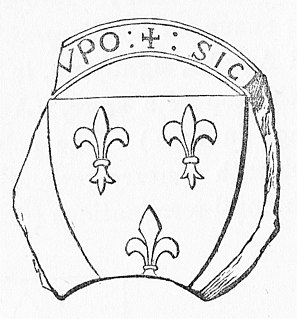
William I de Cantilupe 1st feudal baron of Eaton (Bray) in Bedfordshire, England, was an Anglo-Norman royal administrator who served as steward of the household to King John and as Baron of the Exchequer.
Sir Edmund Pelham was a member of the distinguished Pelham family of Laughton, East Sussex. He was a judge in Ireland who held the office of Chief Baron of the Irish Exchequer, and was noteworthy as the first judge to hold assizes in Ulster.

Sir Robert Throckmorton, 1st Baronet (1599–1650) was created a baronet, of Coughton, co. Warwick, on 1 September 1642.
James Holloway was an English merchant from Bristol and a conspirator of the Rye House Plot.

Spridleston is an historic manor in the parish of Brixton in Devon, England, long a seat of a branch of the prominent and widespread Fortescue family. The ancient manor house does not survive, but it is believed to have occupied the site of the present Spriddlestone Barton, a small Georgian stuccoed house a few hundred yards from the larger Spriddlestone House, also a Georgian stuccoed house, both centred on the hamlet of Spriddlestone and near Higher Spriddlestone Farm.
References
![]() This article incorporates text from a publication now in the public domain : "Fortescue, Nicholas (1575?-1633)". Dictionary of National Biography . London: Smith, Elder & Co. 1885–1900.
This article incorporates text from a publication now in the public domain : "Fortescue, Nicholas (1575?-1633)". Dictionary of National Biography . London: Smith, Elder & Co. 1885–1900.